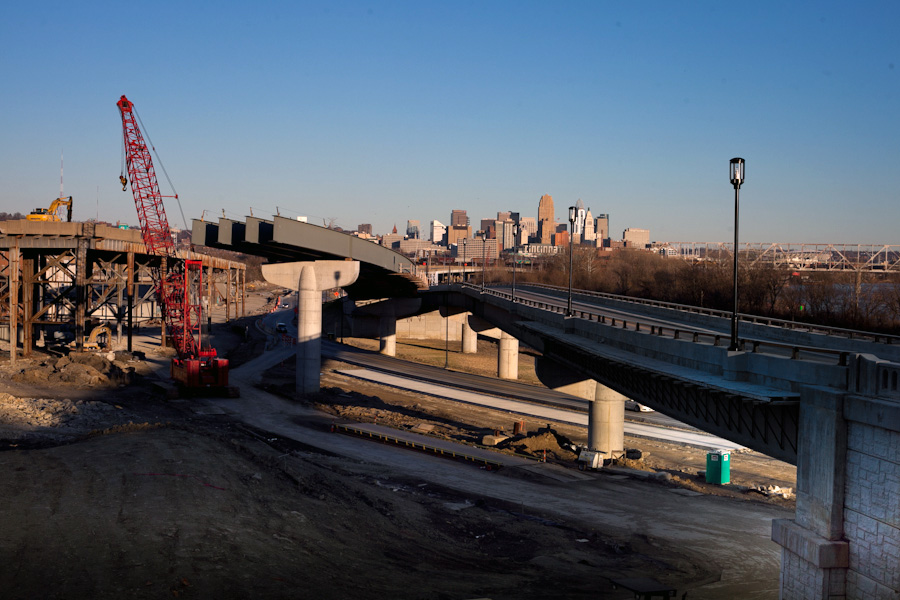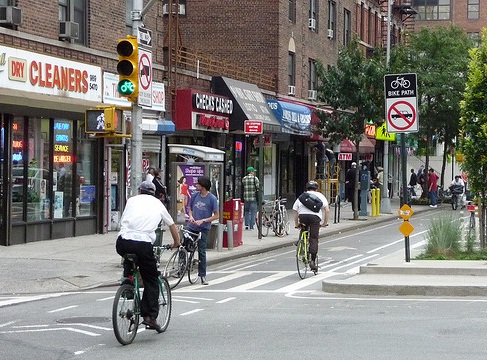The reconstruction of the Waldvogel Viaduct was spared from the massive spending cuts at the Ohio Department of Transportation (ODOT) last January, and has been able to continue on its scheduled path.
According to City of Cincinnati officials, the project will replace the existing, half-mile structure that connects the Sixth Street Expressway to Elberon Avenue, Warsaw Avenue and River Road in Lower Price Hill and Queensgate. The existing structure had been deteriorating at a rapid pace, and had been rated in “Poor” condition for several years leading up to the project.
The $55 million Waldvogel Viaduct reconstruction project is also preserving space for a future bicycle / pedestrian path planned for Cincinnati’s western riverfront.
As of this month, very little remains of the 73-year-old elevated roadway. UrbanCincy contributor, Jake Mecklenborg, visited the construction site last week to capture the visual progress being made in Lower Price Hill.

